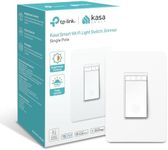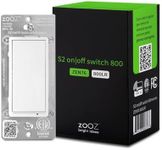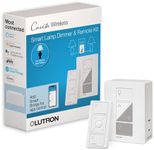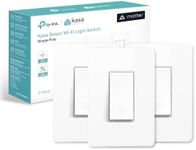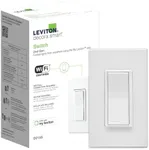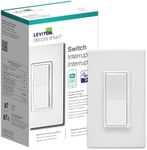Buying Guide for the Best Smart Switches
Smart switches are a great way to add convenience and automation to your home lighting and appliances. They allow you to control your lights or devices remotely, set schedules, and even integrate with voice assistants. When choosing a smart switch, it's important to consider how it will fit into your existing setup, what features you need, and how easy it is to install and use. Understanding the key specifications will help you pick a switch that matches your home's wiring, your preferred control methods, and your automation goals.Compatibility (Wiring and Platform)Compatibility refers to whether the smart switch will work with your home's electrical wiring and your preferred smart home platform (like Alexa, Google Home, or Apple HomeKit). Some smart switches require a neutral wire, which is not present in all homes, especially older ones. Others may only work with certain platforms or require a specific hub. To navigate this, first check your wall box to see if you have a neutral wire, and then make sure the switch supports your chosen smart home system. If you have a neutral wire and use a common platform, you have more options. If not, look for switches designed for no-neutral installations or those that work with your specific platform. Your home's wiring and your preferred ecosystem should guide your choice here.
Control MethodsControl methods describe how you can operate the smart switch—through physical buttons, a mobile app, voice commands, or automation routines. Some switches offer all these options, while others may be limited. If you want maximum flexibility, look for switches that support app control and voice assistants. If you prefer traditional use, make sure the switch still works manually. Think about how you and your household like to control lights: if you want to use your phone or voice, prioritize those features; if you want simple manual control, ensure that's available too.
Load Type and WattageLoad type and wattage refer to the kinds of lights or devices the switch can control and the maximum power it can handle. Some switches are only for standard bulbs, while others can handle dimmable LEDs, fans, or even appliances. The wattage rating tells you the maximum load the switch can safely control. To choose the right one, check what you plan to connect—if it's just regular lights, most switches will work, but for dimmable lights or fans, look for switches specifically rated for those. Always make sure the total wattage of your connected devices doesn't exceed the switch's rating.
Installation TypeInstallation type covers whether the switch is designed for single-pole (one switch controls one light), three-way (two switches control one light), or multi-way setups. Some switches are only for single-pole use, while others can be used in more complex wiring situations. If you have multiple switches controlling the same light, you'll need a switch that supports three-way or multi-way installation. Check your current setup before buying, and choose a switch that matches your wiring configuration.
Scheduling and Automation FeaturesScheduling and automation features let you set timers, routines, or scenes for your lights or devices. Some switches offer basic scheduling, while others allow for advanced automation, like sunrise/sunset triggers or integration with other smart devices. If you want your lights to turn on and off automatically or be part of a larger smart home routine, look for switches with robust automation options. If you just want remote control, basic scheduling may be enough. Your need for automation should guide your choice here.
Dimming CapabilityDimming capability means the switch can adjust the brightness of compatible lights. Not all smart switches offer dimming, and not all lights are dimmable. If you want to control brightness, make sure both your bulbs and the switch support dimming. If you only need on/off control, a standard switch will do. Consider whether you want to set the mood or save energy with dimming, and choose accordingly.




